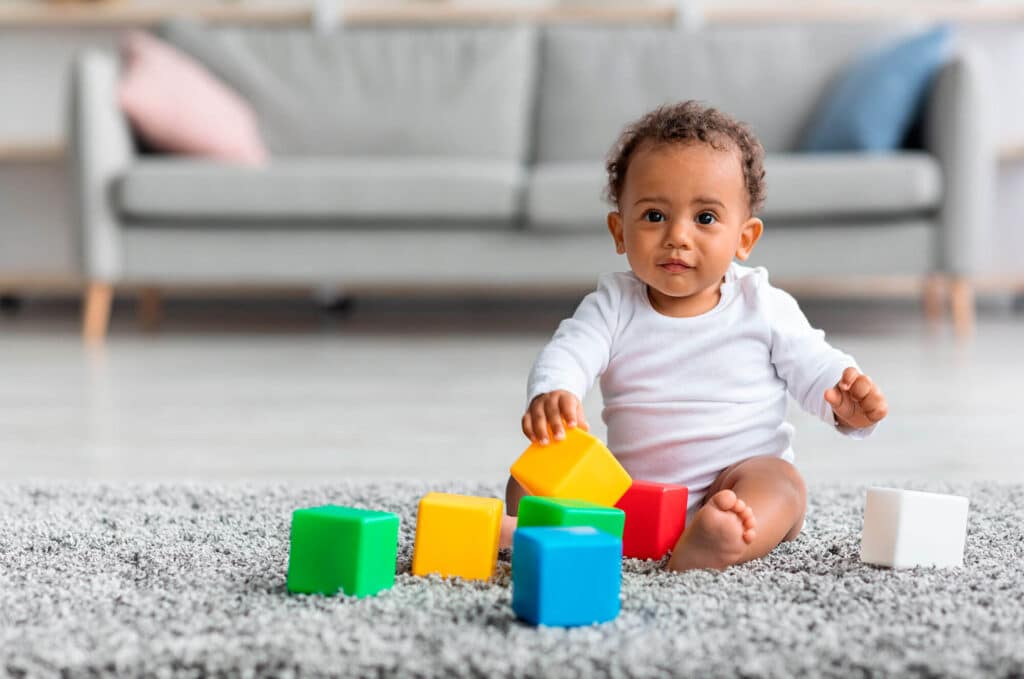The well-being of children lies at the forefront of our concerns as parents, guardians, and caregivers. As children grow and their curiosity heightens, the household can become an exploratory jungle full of exciting, if not dangerous, adventures. Recognizing this, we’ve created an all-inclusive manual to help safeguard your home for your child. From understanding what child safety implies to identifying potential dangers and implementing effective safety strategies, we guide you through every step to ensure your child’s environment is as safe and nurturing as possible.
This blog also explains that children’s needs and behaviors change as they grow—our manual addresses these varying needs by providing specific safety measures for different age groups. Furthermore, we devote parts of the blog to imparting safety education to your child and knowing when to seek professional assistance. Through a comprehensive approach, we strive to help you create a household where your children can explore, learn, and grow securely.

Understanding Child Safety: A Crucial Guide for Every Child’s Parent
As a parent or guardian, your top priority is ensuring the safety and well-being of your little one. The concept of child safety is multi-faceted, encompassing more than the traditional idea of “baby-proofing” your home. Truly, child safety represents a nurturing environment that promotes a child’s well-being and security by actively taking steps to minimize physical and psychological harm exposure. This comprehensive approach requires vigilance in all scenarios your child might encounter. Whether they’re engaged in playtime, enjoying their mealtime, or winding down for nap time, meticulous safety measures should address both evident and hidden dangers.
Physical risks, like stairs, sharp objects, or electrical outlets, are the more prominent concerns. Still, child safety goes beyond these to incorporate non-physical, insidious dangers. This broad spectrum includes safeguarding your little one from harmful cleaning chemicals, ensuring small toy hazards are out of their reach, and verifying their environments are free from materials like lead, asbestos, or carbon monoxide. While these might not pose an immediate danger, they can have serious health implications over time. Ultimately, every one of the following aspects of child safety contributes to your child’s secure space, promoting their holistic growth and health. By prioritizing their safety, you foster an environment that allows them to explore, learn, and grow to their fullest potential in a secure and assured setting.
The Essence of Child Safety
Child safety is crucial. The natural curiosity and sense of adventure in our little ones often mask the potential dangers lurking within their homes, making the task of safeguarding them seem daunting. As adults, it’s our responsibility to determine the best environments and circumstances for their development. This way, our child may apply their inquisitiveness healthily, fostering a love for learning within them. We must remember though, implementing child safety isn’t just about minimizing risks; it’s also about providing them with a secure environment where their curiosity can roam free without leading to harm.
The Centers for Disease Control and Prevention (CDC) shockingly reveals that unintentional injuries like burns, falls, and drownings are the leading cause of death for children in the United States. This harrowing fact solidifies the importance of consistent child safety measures. On the brighter side, placing child safety at the forefront not only keeps the kiddos safe but also provides peace of mind to the parents and caregivers. This peace allows them to shift their focus to nurturing and raising a healthy and happy family. So, in essence, ensuring the safety of our little ones gives us more than just immediate security—it lays the foundation for a brighter future and a healthier, happier community.
Shaping a Safe Environment: Identifying Potential Dangers
Creating a secure space for our young ones starts with determining the potential dangers. Let’s divide these into two categories for easier understanding: physical risks (those that can cause immediate harm) and non-physical dangers (that might lead to health issues over a gradual period).
1. Physical Dangers
Physical dangers are elements in your home that may cause immediate harm, primarily through accidents or injuries. It’s crucial to be consistent in identifying and monitoring these. They can include various circumstances like:
- Falling hazards: Think stairs, windows, and furniture such as tables and chairs.
- Choking hazards: They could be small toys, coins, or even uninflated/burst balloons.
- Drowning hazards: Keep a lookout for bathtubs, buckets, swimming pools, and so forth.
- Electrical and burn hazards: Electrical outlets, appliances, heaters, stovetops are common culprits.
- Poisoning hazards: Medications, cleaning supplies, specific indoor plants, etc.
- Sharp object hazards: Cutlery and glass objects always need careful handling.
2. Non-Physical Dangers
Non-physical dangers, though not posing immediate harm, should also be part of your safety assessment. Over time, these can lead to various health implications. They consist of:
- Toxic substances: Dust off that old paint or soil for lead, asbestos in building materials, or volatile organic compounds (VOCs) in cleaning materials.
- Illness vectors: Molds or pests like cockroaches or rats can be quite harmful.
- Allergens: Common allergens include dust, pet fur, and specific plants.
- Noise pollution: Consistent exposure to loud noises could impact a child’s hearing and stress levels.
In determining these, keep in mind the age, abilities, and behaviors of the child, or children, in question. The safety assessment should cover these hazards, ensuring your home stays child-friendly under all circumstances. After all, every little effort makes a big difference!

Implementing Safety Measures
After spotting potential hazards, it’s time to take action and secure your household. Let’s explore how to handle both physical and non-physical dangers effectively, just like a trusted friend would help you through this process.
Implementing Physical Safety Measures
Tackling physical risks means adjusting the environment and setting up rules for safe behavior. As an example, here’s how to reduce potential hazards:
- Use Safety Gates: Place them at the top and bottom of stairs, and around rooms with potential risks.
- Window Safety: Set up window guards and stops on above-ground-level windows.
- Secure Furniture: Prevent tipping by anchoring heavy items (like bookcases and TVs) to the wall.
- Small-Object Management: Frequently check the floor and children’s reach for choking hazards.
- Water Safety: Never leave a child unattended near water, and empty portable water sources (like buckets) after use.
- Electrical Safety: Cover outlets, keep appliances out of reach, and educate children about electrical safety.
- Safe Storage: Keep sharp objects, harmful substances, and medications securely out of children’s reach.
Implementing Non-Physical Safety Measures
For non-physical safety, focus on maintenance, product choices, and home hygiene. Here’s how you can minimize non-physical risks that can affect your child:
- Toxic Substances: Opt for low or no-VOC paints and non-toxic cleaning supplies when possible.
- Lead and Asbestos: If you have an older home, consider assessing lead paint or asbestos materials. If found, professional abatement is vital.
- Pest Control: Keep your home clean, manage waste properly, and choose safe pest management when needed.
- Mold Prevention: Safeguard your home against leaks and moisture. Ventilate humid areas like bathrooms and kitchens to prevent mold growth.
- Allergens: Clean and vacuum regularly, maintain pets properly, and consider air purifiers if needed.
- Noise Management: Keep an eye on exposure to loud noises and ensure noise levels are within safe limits.
As parents, you can provide a safer environment for your children with the right provision and a proactive approach. The key is being aware of potential hazards and creating a space where children can safely explore with minimal risks.
Special Measures for Each Child’s Age Stage
Kid-proofing isn’t a one-time event – as your little one grows, so does their curiosity and the potential risks. Hence, the precautions you need to take also evolve. Here are some safety measures, neatly categorized by age groups, so you can act accordingly to keep the risk at bay.
Infant Safety
The early infancy phase, defined by fast physical development and increasing exploration, has unique needs. Some crucial infant safety tips include:
- Sleep Safety: Always position infants on their backs for sleeping to minimize the risk of Sudden Infant Death Syndrome (SIDS). Keep their crib bare to dodge any suffocation hazards.
- Feeding Safety: Food for your infant should be in line with their developmental stage to prevent choking.
- Car Safety: Don’t forget to secure your infant in their car seat, positioned correctly and facing the vehicle’s rear.
- Fall Prevention: Don’t leave your infant unattended in elevated places, such as a changing table or bed.
Toddler Safety
When your infant steps into their toddler status, they begin to explore more independently. Here are some tips to ensure their safety:
- Home Proofing: Buffer sharp corners on furniture, secure bookcases and similar items against toppling, and make sure to install child-safety locks on cabinets and doors.
- Water Safety: Always secure all pools or tubs when not in use, and never leave a toddler alone near water.
- Choking Safety: Keep small objects and risky foods out of their reach.
Road Safety: Start teaching basic road safety rules and make sure you always hold their hand near traffic.
Children Aged 4-7
For children aged between 4-7 years, characterized by schooling and more independent play, some essential safety tips include:
- Bike Safety: Equip them with helmets and safety gear, and school them in safe biking rules before they kick off on bikes or scooters.
- Online Safety: Keep an eye on their internet usage to protect against exposure to inappropriate content and virtual threats.
- Fire Safety: Make sure they’re in the know about fire emergency procedures, and your home should have working smoke alarms.
Preteen Safety
As children turn older, their independence and time spent away from home increase. Here are the focus areas for preteen safety:
- Personal Safety: Teach them basic individual safety rules, such as not going off with strangers and memorizing emergency contact numbers.
- Online Safety: Have a discussion about online privacy and cyber manners. Install reputable parental control software to limit exposure to inappropriate content online.
- Road Safety: As they approach legal driving age, start conversations on bike, pedestrian, and car safety.
Remember that child safety is a process in constant evolution along with your child’s growth. Stay aware of any potential risk linked with every stage of your child’s development and tweak your methods to offer the best possible protection.

Educating Your Little One About Safety
Featuring safety measures at home is significant, but nurturing your child’s understanding of safety is of equal importance. Empowering them with the requisite knowledge will instill confidence when you can’t be by their side.
The Necessity of Safety Lessons for Your Child
In essence, the definition of safety education is teaching your child necessary skills and knowledge to safeguard themselves and make well-informed decisions in different circumstances. Also, it’s crucial for the following reasons:
- Empowerment: Equipping your child with safety information empowers them to care for themselves competently, particularly in potentially perilous situations.
- Risk Comprehension: Kids who grasp the ‘why’ behind safety regulations are more inclined to respect them and understand their significance.
- Life Skills: Safety lessons are among the fundamental life skills your youngster requires to journey through the world independently down the line.
Bear in mind that safety education isn’t a once-off event; it’s an ongoing process. As your child matures, modify these lessons and revisit them frequently to completely prepare your child for navigating their environment safely.
The Right Time to Consult a Professional
While the guidelines and precautions you take as a parent can shelter your child substantially, there are situations where professional help becomes essential. Parents need to be able to recognize these instances and know where to find suitable resources.
Identifying Instances That Might Need Professional Assistance
Although parents can control or reduce certain risks, some circumstances are beyond their influence. In these instances, it’s important to seek out a professional. Here are a few scenarios:
- Chronic Illness or Allergies: Regular consultations with a pediatrician or specialist are critical if your child has chronic illnesses, allergies, or other specific medical conditions.
- Speech or Developmental Delays: If there are indications of speech or developmental delays in your child, professional therapists can offer valuable help and intervention.
- Psychological Challenges: Childhood might come with phases of anxiety, depression, or social isolation. If these complications persist, it’s advisable to seek help from a child psychologist.
- Accidents or Injuries: In the event of medication reactions, falls, or other accidents that lead to serious injuries, immediate medical attention should be carried out.
Resources for Professional Aid
Being aware of where to get professional assistance is vital in ensuring your child’s safety. Here are a few options:
- Pediatricians and Specialists: They are go-to sources for any concerns about your child’s physical health.
- Child Psychologists and Therapists: They offer help for emotional, psychological, or developmental difficulties.
- Emergency Medical Services: These entities offer immediate professional care in the case of severe accidents or health emergencies.
- Child Safety Organizations and Hotlines: Bodies like the American Association of Poison Control Centers, the National Center for Missing & Exploited Children, or local child welfare services can lend a hand with unique safety issues.
Make sure to research and save essential contact numbers and be familiar with your local community resources that might be necessary during a time of need.
Your role as a person entrusted with the care of a child is multi-dimensional. While keeping your home safe and providing necessary education are key, recognizing when it’s time to seek professional assistance is equally important for your little one’s safety and well-being. Always listen to your instincts – when in doubt, seek help.

Conclusion
Child safety is an all-encompassing, active, and continuous responsibility. Our comprehensive guide has provided you with the necessary support, knowledge, insights, and tools to ensure your child grows in a secure atmosphere. We have covered essential safety concepts, potential dangers, practical measures tailored to age groups, the importance of safety education, and professional resources to assist you. Your role as a parent or guardian is irreplaceable, and knowing the safety precautions and procedures can help you provide an environment that nurtures your child’s growth and exploration.
In conclusion, our children are our most precious treasures. Keeping them safe is a testament to our love and care. Remember, safety is not just a measure we take; it is a culture we must cultivate in our homes and impart to our children. Have confidence in the knowledge you’ve gained, apply these strategies with diligence and love, and set the foundation for a safer, healthier future for your kids and their developing independence. Continue your journey of diligent parenting, knowing you are doing your utmost to secure your precious future.
Did you find this article helpful? Please comment down below. If you have any questions don’t hesitate to ask.



